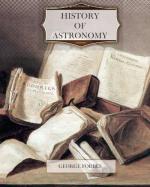|
This section contains 1,766 words (approx. 6 pages at 300 words per page) |

|
Overview
Medieval astronomers were frequently called upon to resolve practical questions pertaining to social or religious matters. This was especially true in the Islamic world, where the motions of heavenly bodies were, and still are, closely tied to religious law. Astronomers also had to respond to the technical demands of astrologers who occupied an important place in Islamic society. Efforts throughout the Middle Ages to address these and related needs adequately led to improvements in existing astronomical tables and produced important theoretical developments that had applications far beyond the specific problems they were intended solve. The culmination of this work was the Alfonsine Tables, introduced in Paris around 1320.
Background
Ever since the time of the Babylonians, theoretical models have been developed for predicting the time of occurrence and location of celestial phenomena...
|
This section contains 1,766 words (approx. 6 pages at 300 words per page) |

|


